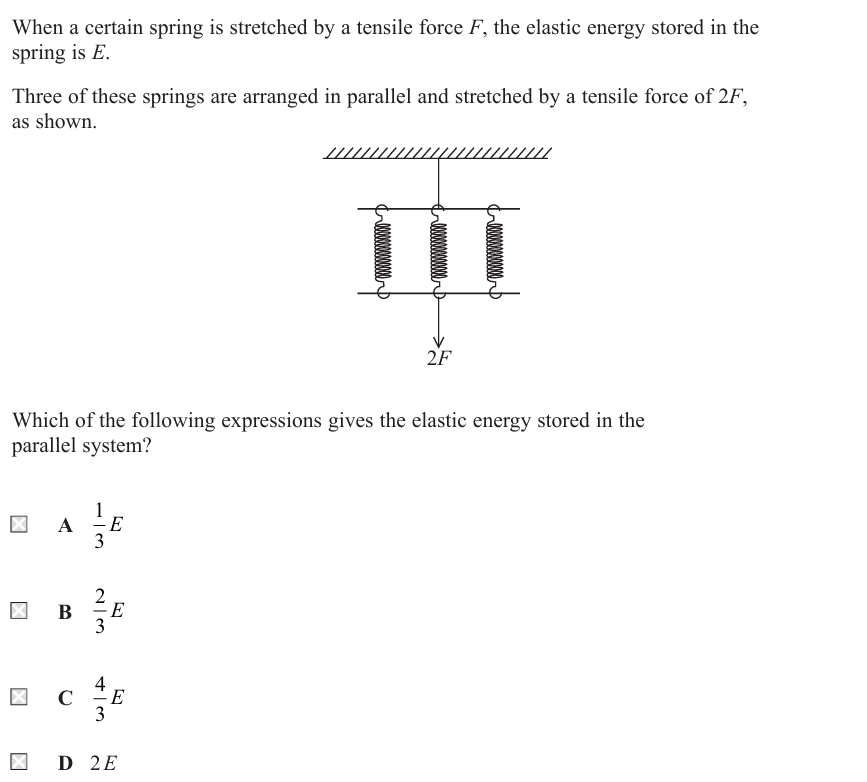Physics ALL questions 2009-2025
1/60
There's no tags or description
Looks like no tags are added yet.
Name | Mastery | Learn | Test | Matching | Spaced |
|---|
No study sessions yet.
61 Terms
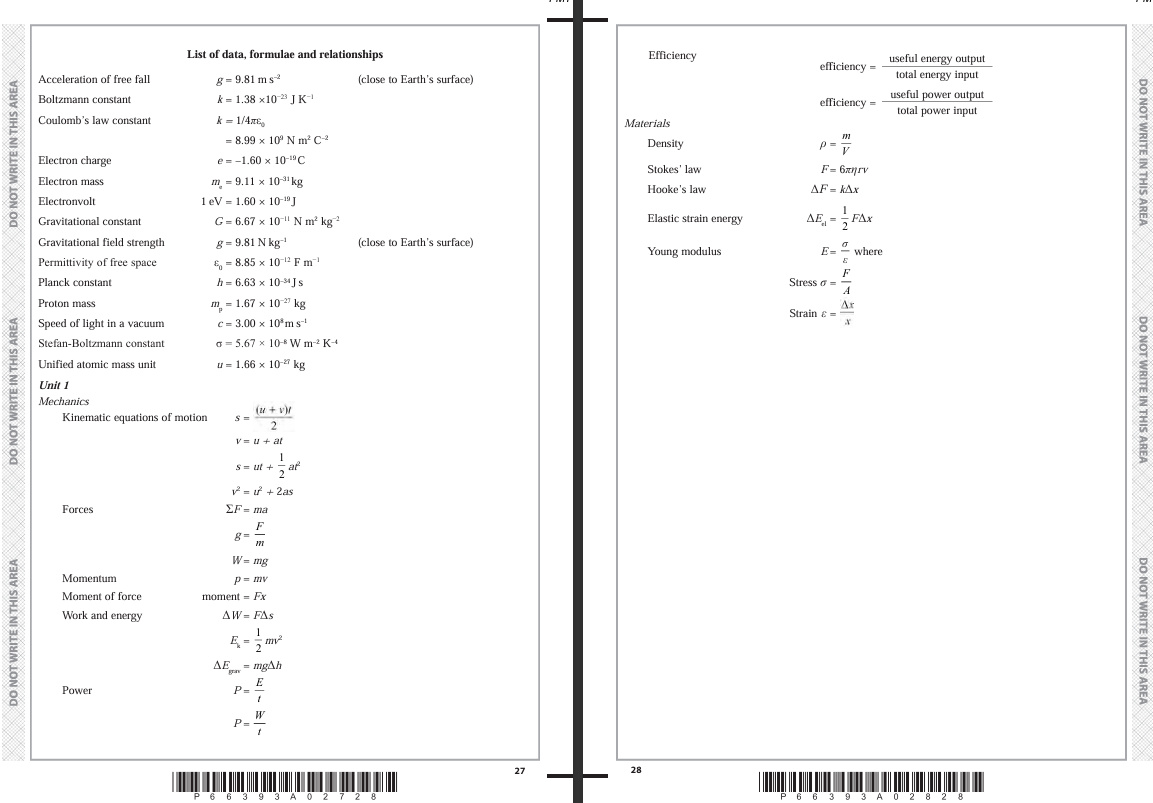
DATA, FORMULAS AND RELATIONSHIPS
.
Question 11:
A railway carriage of mass 7.15 × 104 kg moving at 4.50 m s-1 collides with a second railway carriage of mass 5.35 × 104 kg moving in the same direction.
The carriages join together. Immediately after the collision they move at a speed of 3.62 m s-1 .
(a) Show that the total momentum of the carriages immediately after the collision was approximately 4.5 × 105 kg m s-1 . (2)
(Paper: June 2021)

11(b) Calculate the velocity of the second carriage before the collision.
(c) Calculate the change in total kinetic energy during the collision.
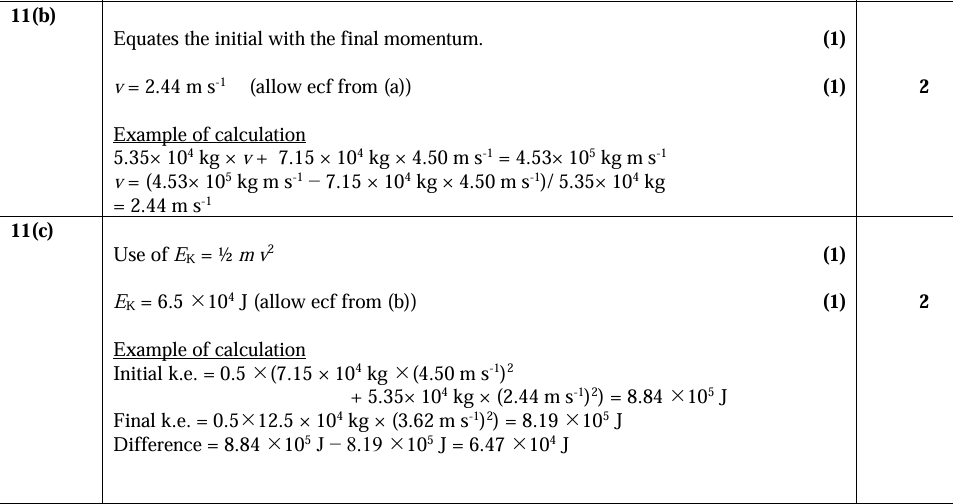
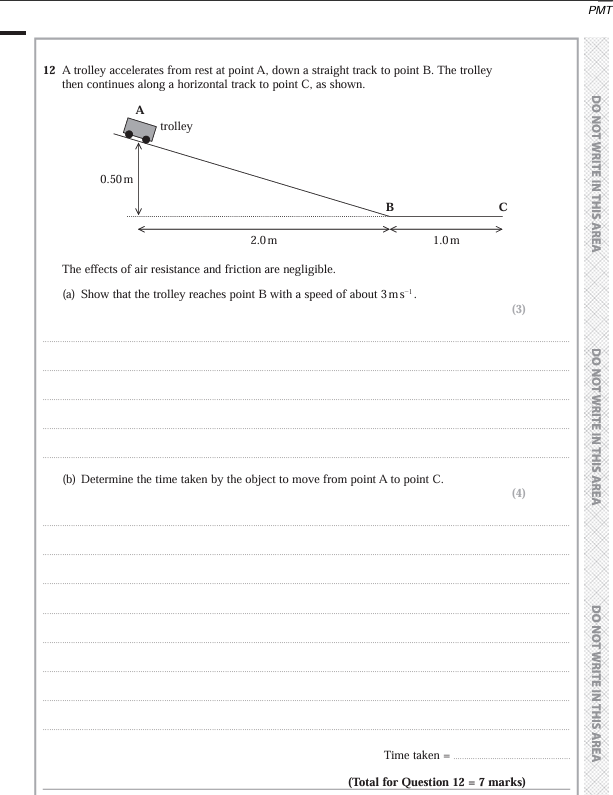
Question 12.
(Paper: June 2021)

Question 12, June 2021
The photograph shows a submarine below the surface of the sea.
(a) The submarine has a volume of 5.83 × 103 m3. The submarine is stationary in a region of the sea where the density of the seawater is 1.03 × 103 kg m-3.
(i) Calculate the upthrust exerted on the submarine by the seawater. (2)
(ii) Explain why the mass of the submarine must be 6.0 × 106 kg. (2)
(b) The submarine now moves into a region of the sea where the water is less salty, and the density of the water reduces to 1.01 × 103 kg m−3 .
(i) Explain what would happen to the submarine as it moves into this region of lower density seawater. (3)
(ii) The submarine alters its weight by pumping water in or out of its internal tanks. Determine the mass of water that the submarine should pump, in or out of its tanks, to maintain its depth below the surface of the sea. (2)
a) Use of ρ=m / V (and U = mg)
U = 5.9 × 107 N
Example of calculation
U = ρ g V = 1.03 × 103 kg m-3× 9.81 N kg-1× 5.83 × 103 m3 = 5.89× 107 N
__________________________________________________________________________
ii) Weight of submarine is equal to the upthrust. (1)
Refers to W = m g to justify a mass of 6.00 × 106 kg
OR
Refers to mass calculated in (a)(i) to justify a mass of 6.00 × 106 kg
Example of calculation : W = U = 5.89× 107 N = m × 9.81 N kg−1 m = 5.89× 107 N / 9.81 N kg−1 = 6.00 × 106 kg
________________________________________________________________________
b) i) The upthrust (of the water on the submarine) is less than the weight of the submarine (1)
A resultant force acts (downwards) on the submarine (1)
So the submarine will (begin to) sink (dependent on MP1) (1)
__________________________________________________________________________
b) ii) Use of ρ = m/V and W = mg to calculate new upthrust
Mass of water = 1 × 105 kg (pumped out) (allow ecf from (a)(i))
Example of calculation: Upthrust = (1.01 × 103 kg m-3) x 9.81 N kg-1× (5.83 × 103 m3) = 5.78 × 107 N
Net downward force = 5.89× 107 N – 5.78 × 107 N = 1.14 × 106 N
Mass to be lost = 1.14 × 106 N / 9.81 N kg-1= 1.17 × 105 kg
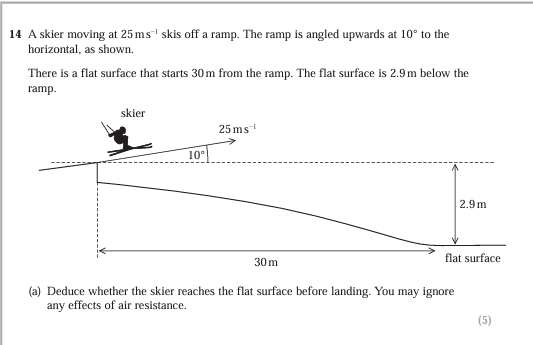
Question 14, june 2021
part a (in image)
(b) Another skier travels along the horizontal surface with an initial speed of 23 m s−1 . She comes to rest after travelling a distance of 43 m. Calculate the average force required to bring the skier to rest. mass of skier = 63 kg
(part a MS in image)
part b) Either Use of EK = ½ m v2 Use of ΔW = FΔs F = 3.88 × 102 N
Or Use of v2 = u2 + 2as or combination of suvat equations to find deceleration.
Use of F = m a F = 3.88 × 102 N
Example of calculation:
EK = ½ × 63 × 232 = 1.67 × 104 J
1.67 × 104 J = F × 43 F = 1.67 × 104 J / 43 = 3.88 × 102 N
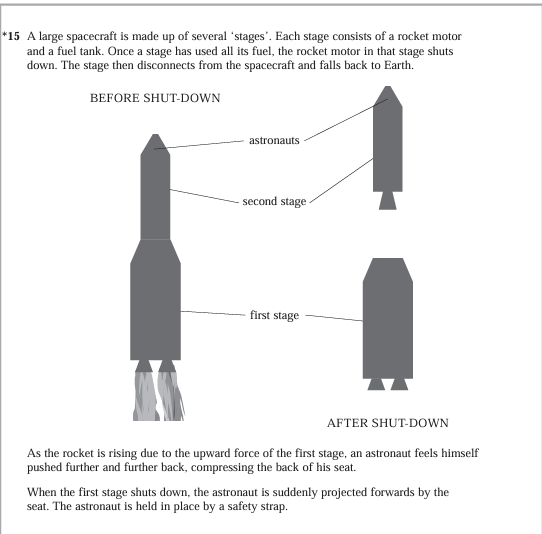
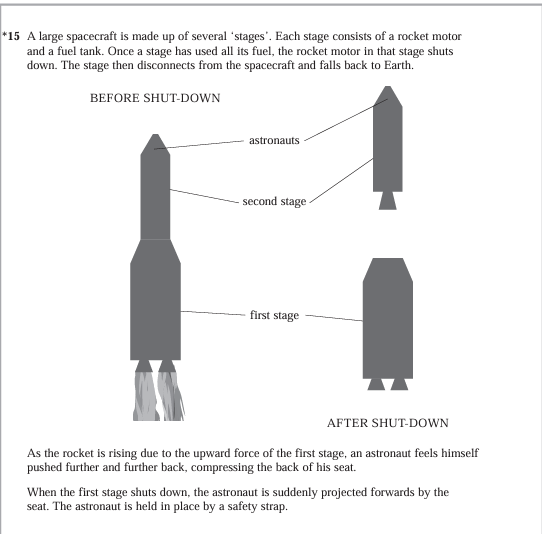
*Question 15, June 2021
Explain the effects experienced by the astronaut. You may assume that the force provided by the first stage rocket motor is constant until the moment it shuts down.
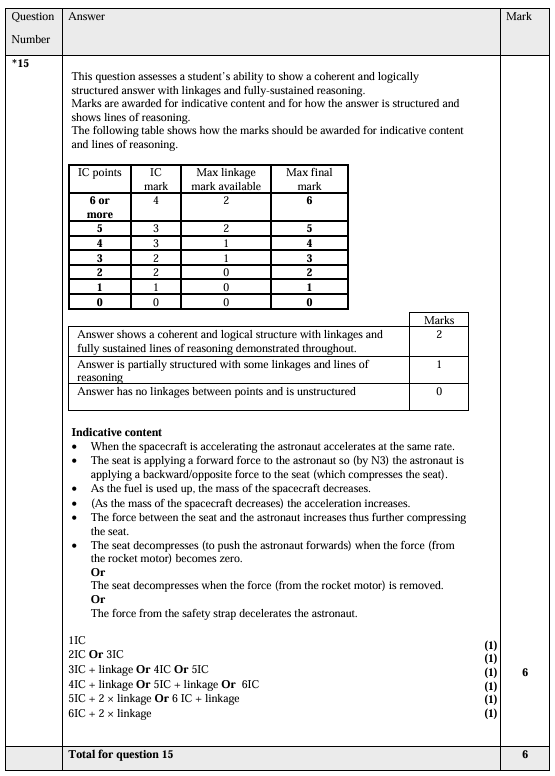
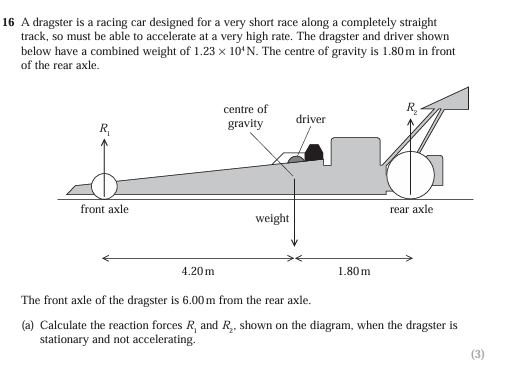
Part a)
R1= ………………….
R2=………………….
part b)
(b) When the dragster starts, there is a driving force that gives the dragster an initial forward acceleration of 5.50 g. Calculate the initial driving force on the dragster. (2)
_______________________________________________________________________
part c)
(c) The power from the car’s engine is constant. Explain how the force from the engine varies as the car accelerates. (2)
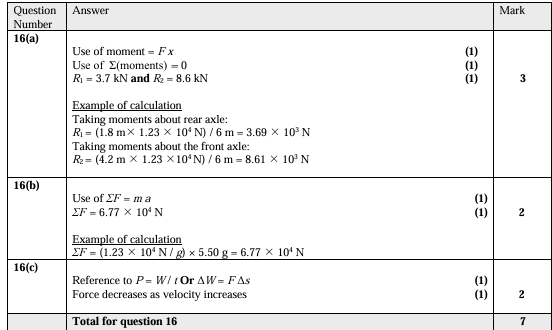
OLD SPEC January 2009
question 2:
A cyclist travelling at a speed of 4.2 m s–1 accelerates at 1.1 m s–2. In a time of 7.4 s the distance travelled is?
question 3:
What is the same as the unit Newton (N)?
question 9: Velocity can be found from the?
2) s= ut + ½ a t2 —> s =(4.2)(7.4) + ½ (1.1)(7.4)² —> s= 61.198 s = 61 (Option B)
3) Kg m2s-2 (Option C)
4) Gradient of a displacement time graph (Option C)
Old spec, January 2009
Question 11:
d) Why are initial and average acceleration different?
d) Mass decreases so acceleration increases and so the initial acceleration will not be the same as the average acceleration
Old spec january 2009 *
Question 15
* 15 You are asked to determine the acceleration of free fall at the surface of the Earth, g, using a free fall method in the laboratory.
(a) Describe the apparatus you would use, the measurements you would take and explain how you would use them to determine g. (6)
b) suggest one precaution you will take
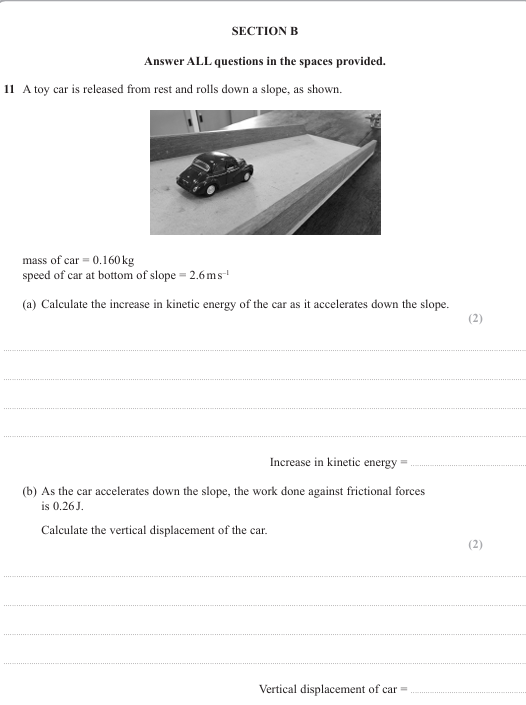
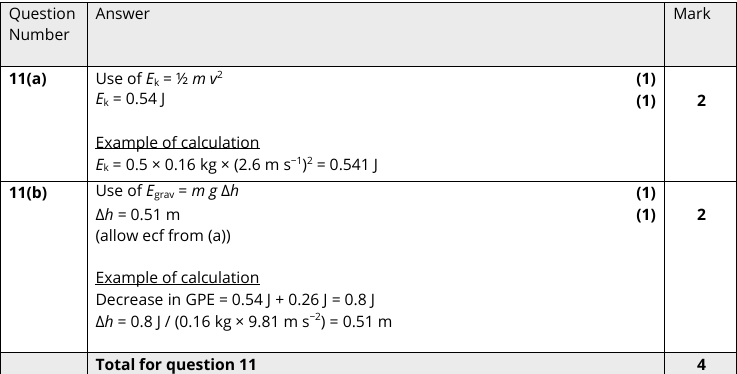

13 b)ii) Determine the time taken to reach the end of the slope.
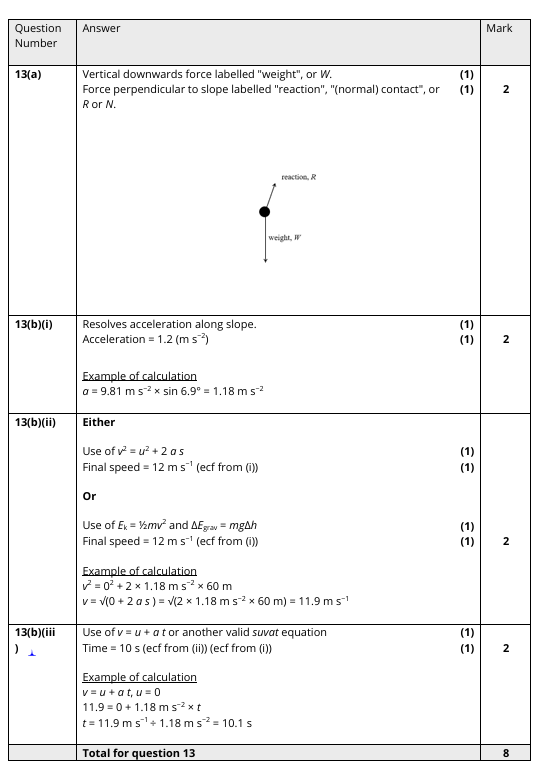

ii) Determine the Young modulus of stainless steel using your value for the gradient. (3)
c) The breaking stress for this stainless steel is known to be 480 MPa. Deduce whether it is safe for the student to increase the weight to 100.0 N. (3) (October 2021)
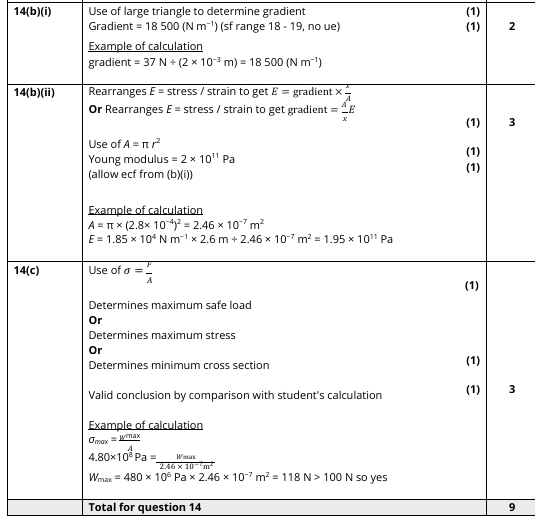
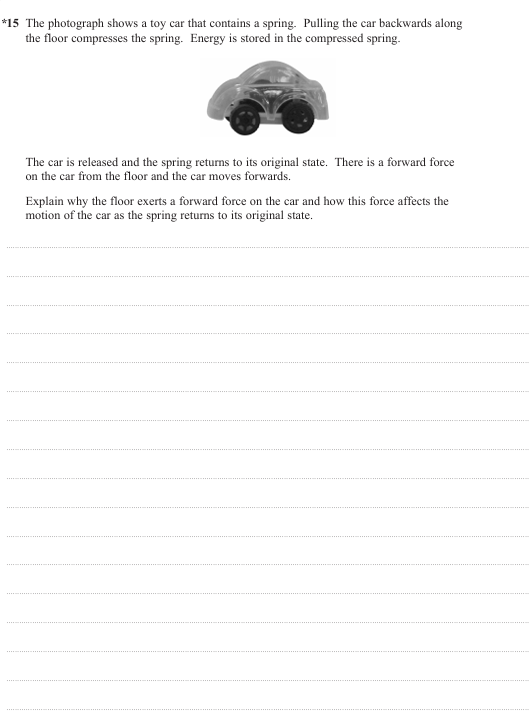
(October 2021) (6)
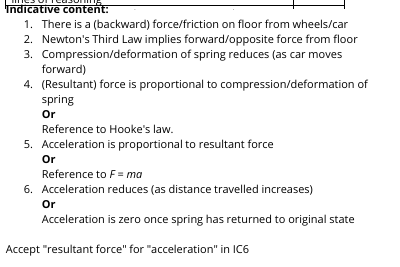
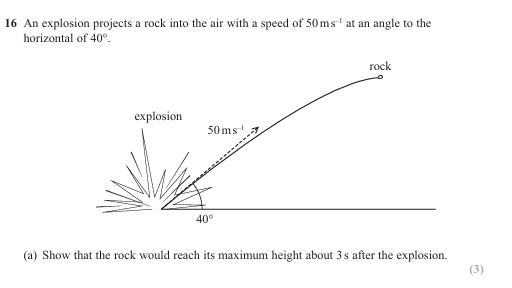
(October 2021)

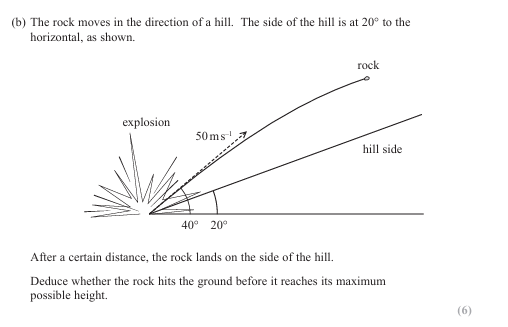
(October 2021)(6)
Example of calculation :
vH = 50 m s−1 × cos (40°) = 38.3ms−1
sH = vH × t
sH = 38.3 m s−1 × 3.28 s =125 m
maximum height of rock = sV = uV t + ½ a t2 with a = − g
sV = 32.1 ms−1× 3.28 s − ½ × 9.81 m s−2 × (3.28 s)^2 = 52.6 m
vertical height of hill at horizontal distance of 125 m = 125 m × tan (20°) = 45.7 m
45.7 m < 52.6 m, so no
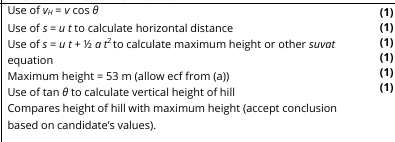
a) What is meant by laminar flow? b) And what is the condition necessary for the speed to be constant? (October 2021)
a) The layers of fluid flow past each other without mixing
Or Velocity at a fixed point (relative to the drop) remains constant
b) Resultant force is zero Or Sum of the vertical forces is zero

(October 2021)
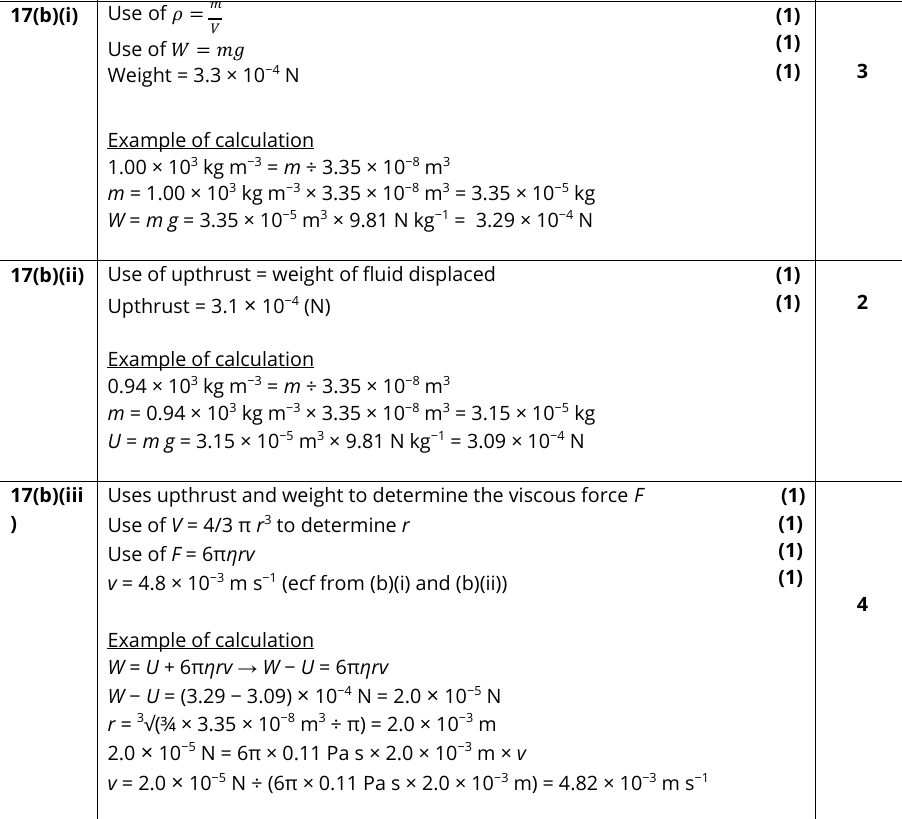
What other unit is equivalent to Watt (W)? (Oct 2024)
Js-1
Because P = Work done (J) / time (s)
So J/s which is Js-1
Name all scalar and vector quantities
from
Energy (J)
Distance (m)
Power (W)
Speed (m/s)
Mass (kg)
Time (s)
Velocity (m/s)
Weight (N)
Acceleration (m/s2)
Force (N / Kg/ms2)
Momentum (Kg m/s)
Impulse (N/s)
Electric field (N/C)
Torque (moments) (Nm)
Temperature (K)
Work (J)
Density (kg/m3) or (g/cm3)
Displacement (m)
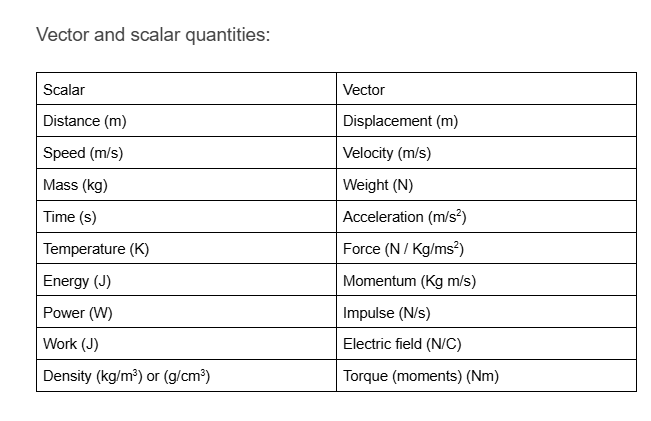
A person stands on a moving staircase.
The moving staircase increases the G.P.E by 5000J in a time of 42s
The efficiency of the moving staircase is 0.63
Write an expression that gives the power input of the moving staircase in watts. (Oct 2024)
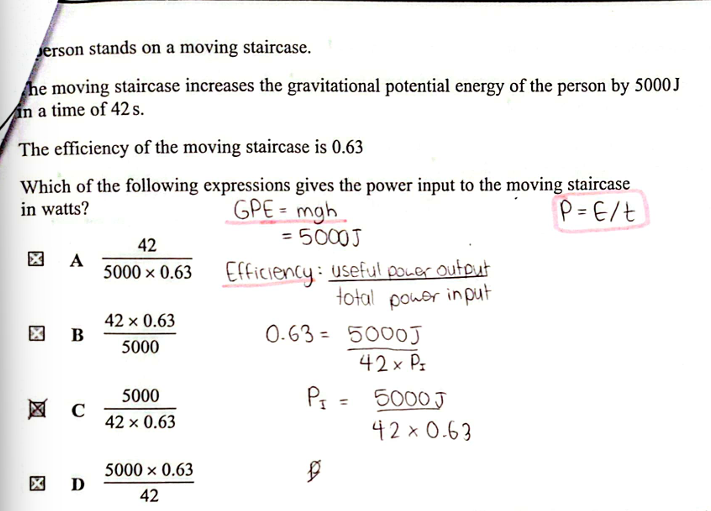
The wire at the elastic limit is called…. (Oct 2024)
Elastically deformed
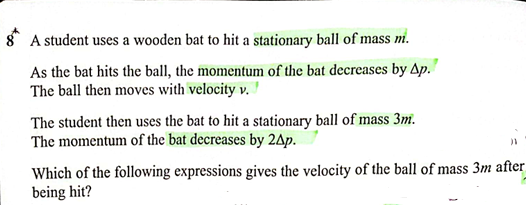
(Oct 2024)
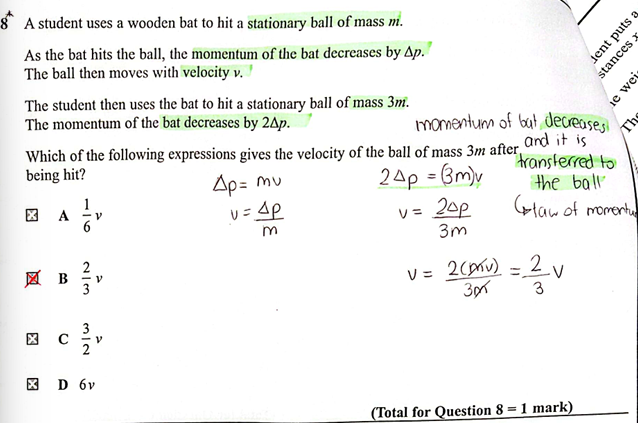

(Oct 2024)
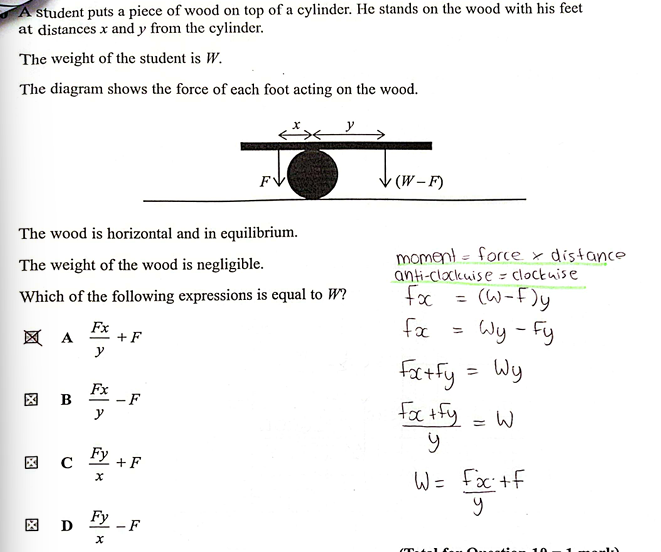

(Oct 2024)
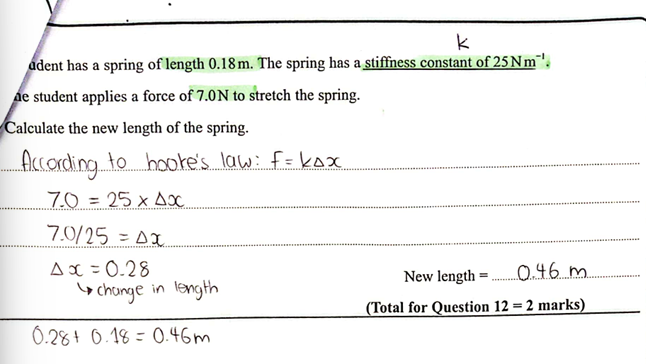
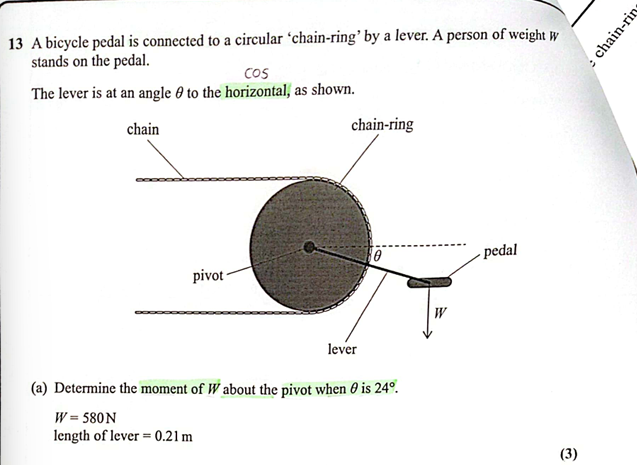
(Oct 2024)
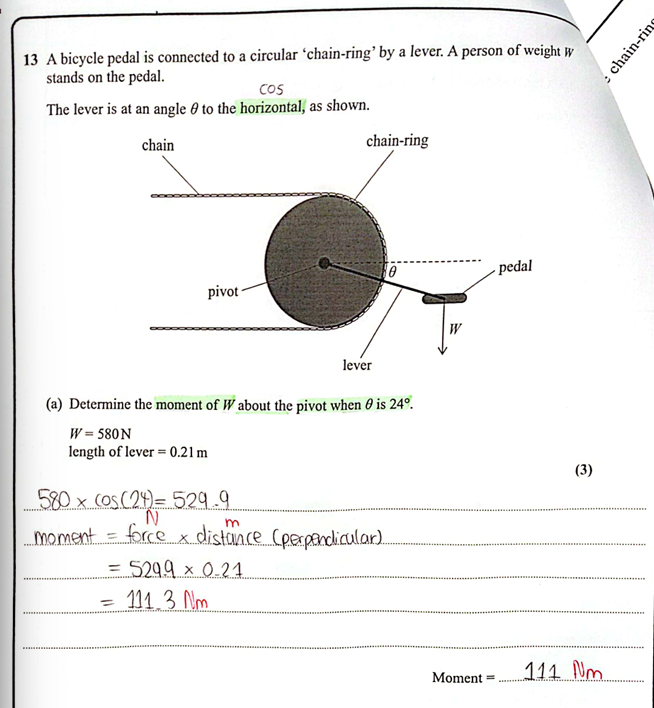
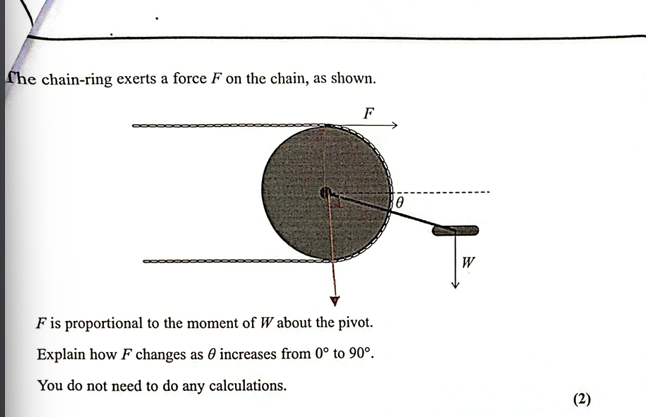
(Oct 2024)
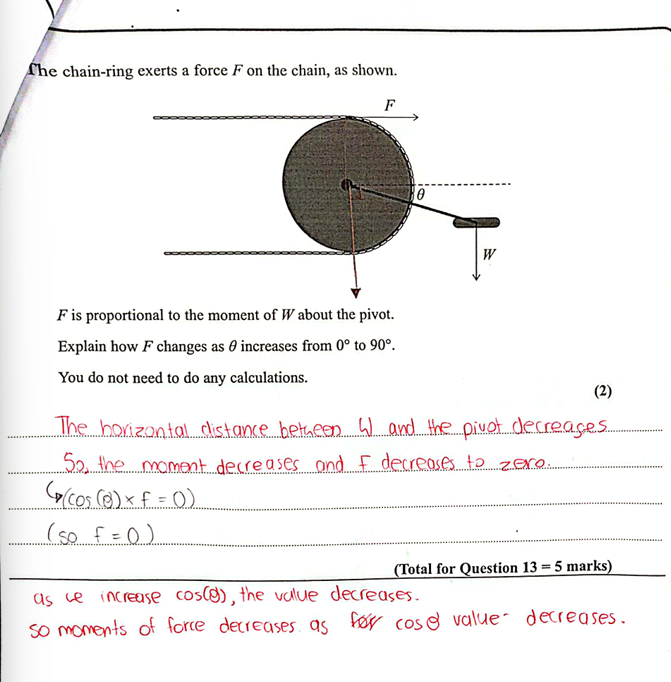

(Oct 2024)
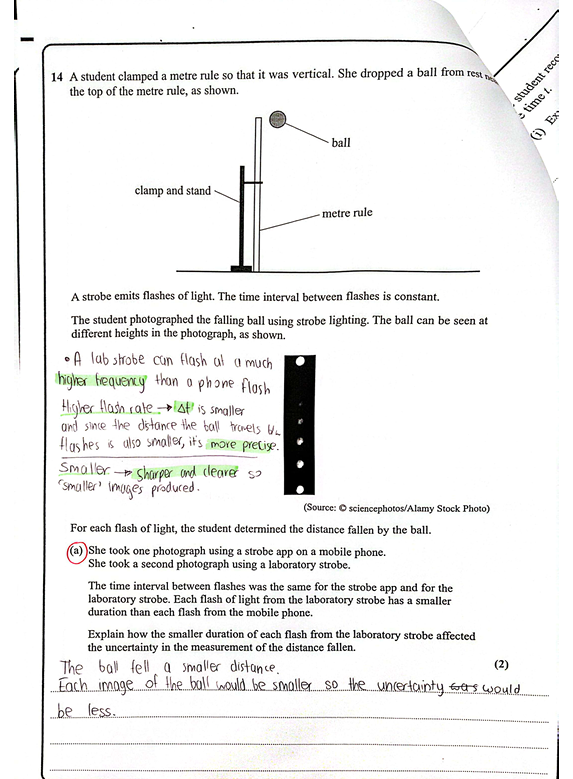

(Oct 2024)


(Oct 2024)
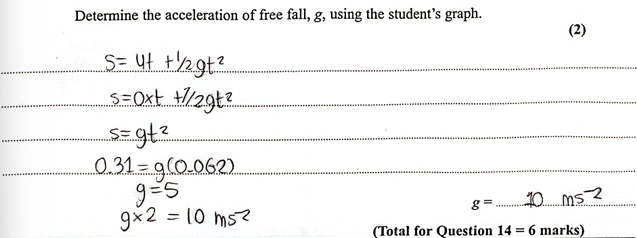

(Oct 2024)
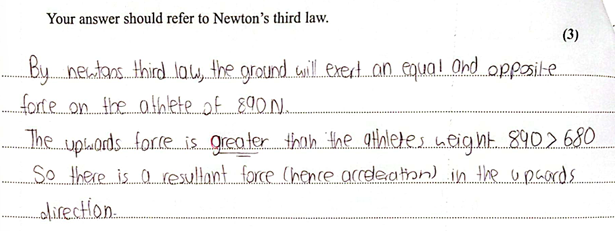

(Oct 2024)
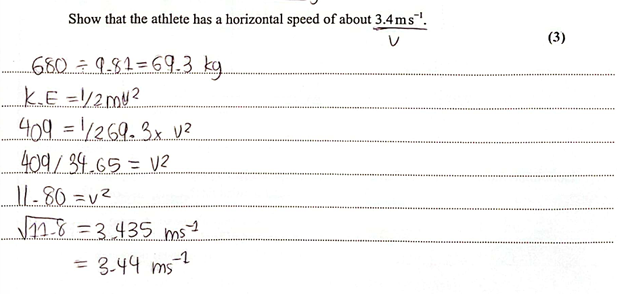

(Oct 2024)
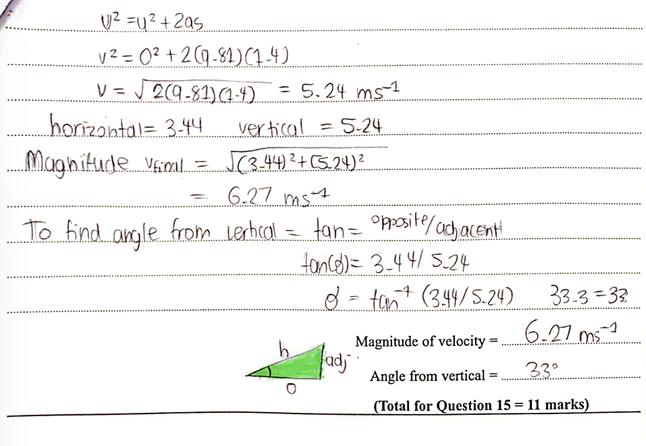
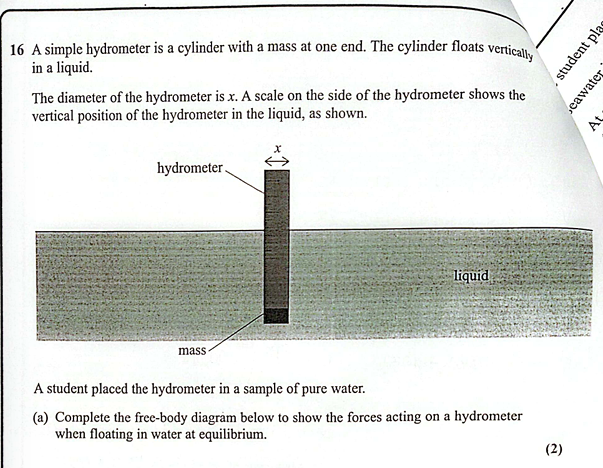
(Oct 2024)
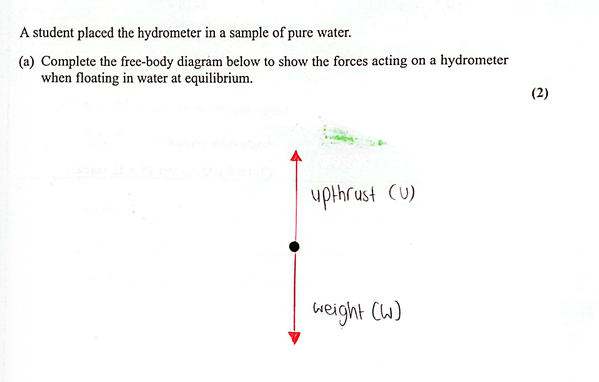
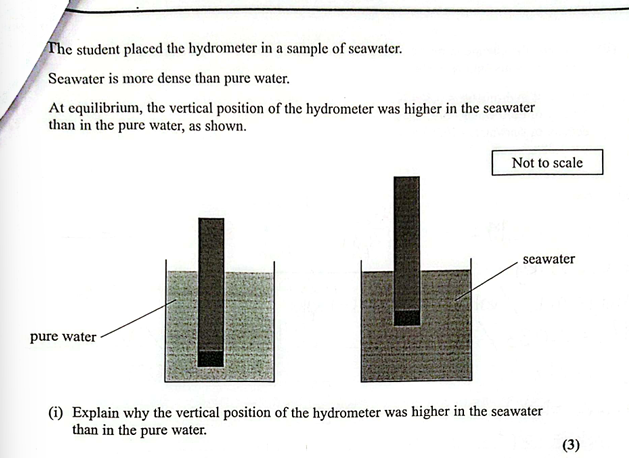
(Oct 2024)
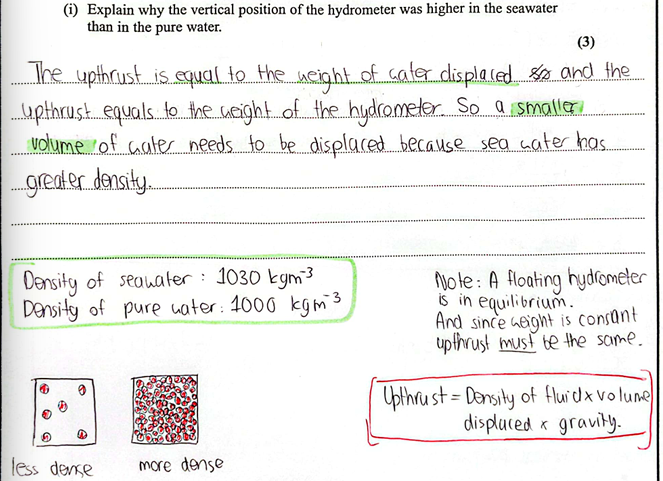

(Oct 2024)
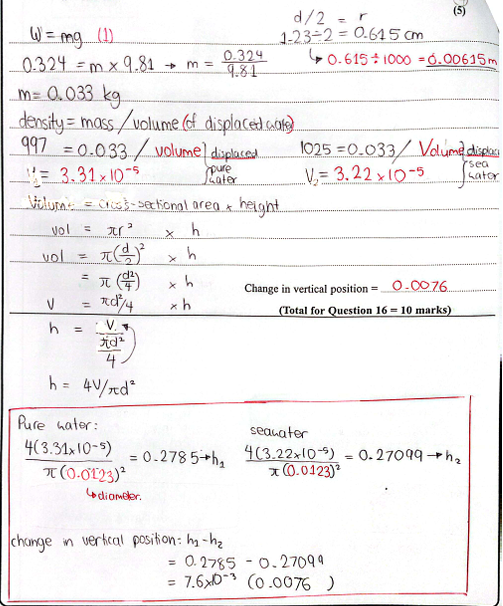
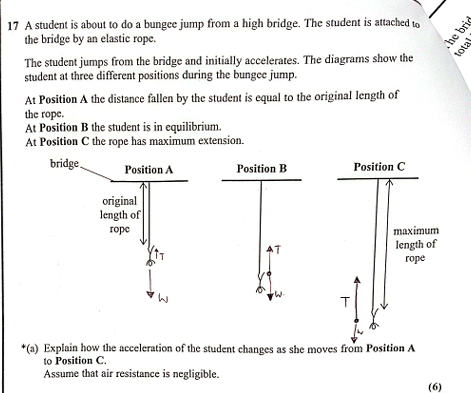
(Oct 2024)
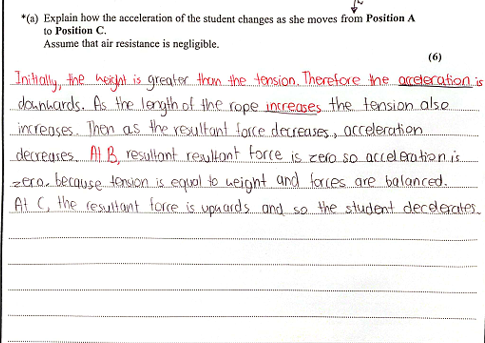
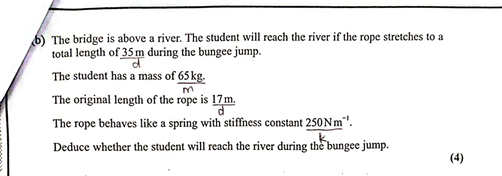
(Oct 2024)
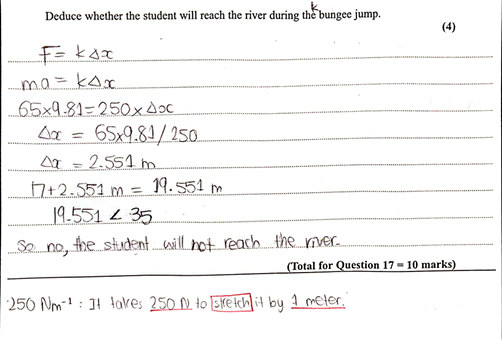
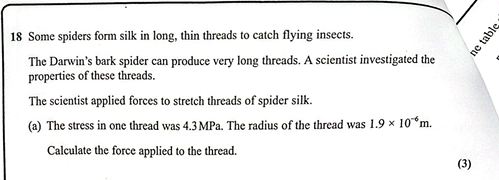
(Oct 2024)
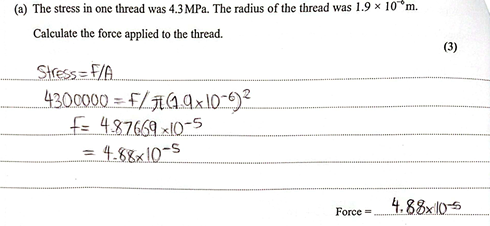

(Oct 2024)
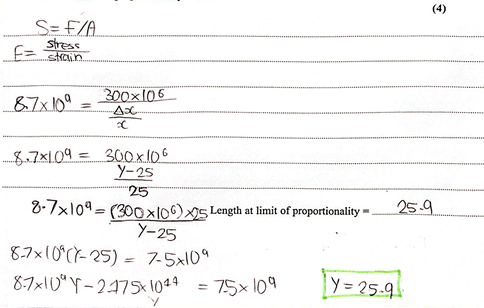
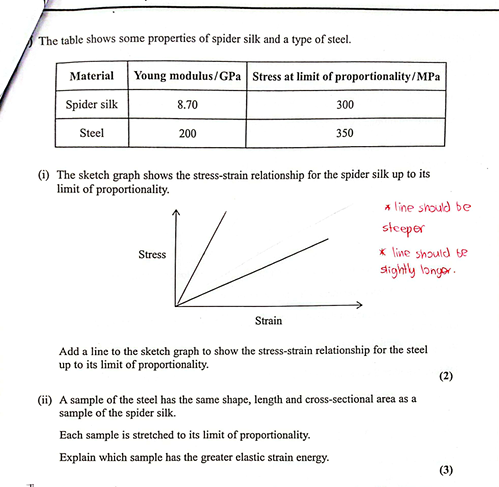
(Oct 2024)


(Oct 2024)

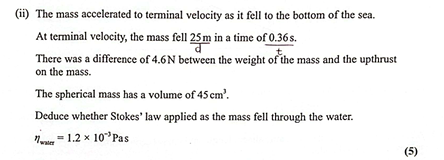
(Oct 2024)

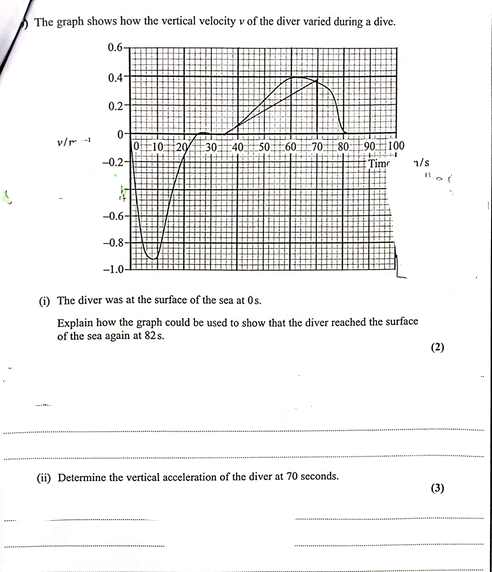
(Oct 2024)

Why should the student use a longer, thinner wire? (6)
For a long wire, the extension will be larger, and for the same load the extension is proportional to the original length. For a thin wire, the extension will also be larger, since for the same load the extension is inversely proportional to the cross-sectional area. This larger extension means the percentage uncertainty in measuring the extension will be lower, leading to a more accurate result. Furthermore, a smaller load cn be used with a long or thin wire to produce a measurable extension.
Define young modulus?
Stress per unit strain
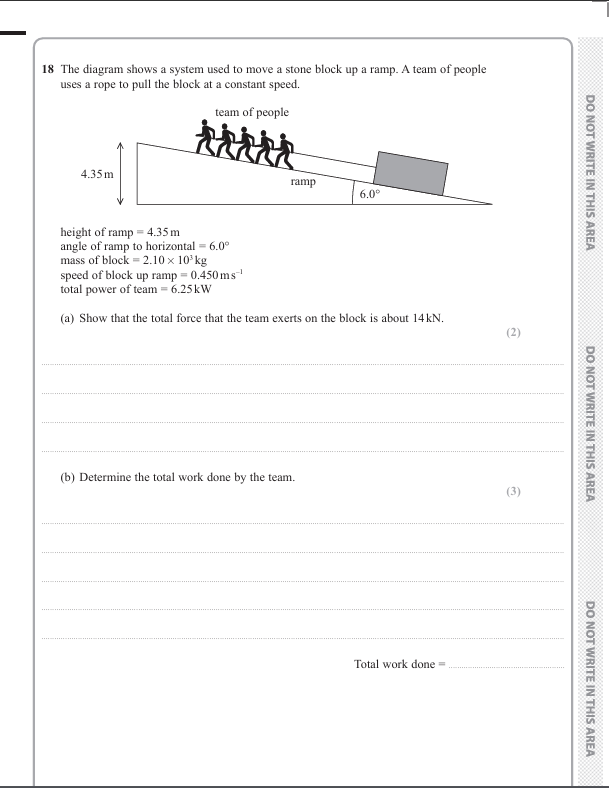
c)Show that the useful work done on the block is about 90 kJ
d) Determine the efficiency of the system (October 2021)
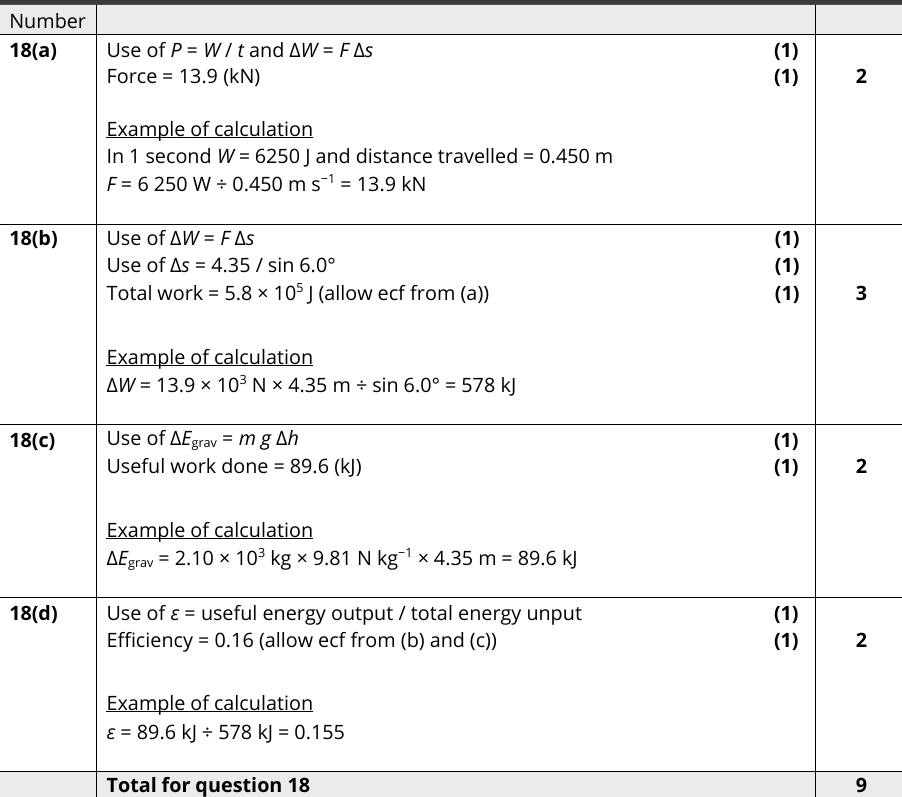
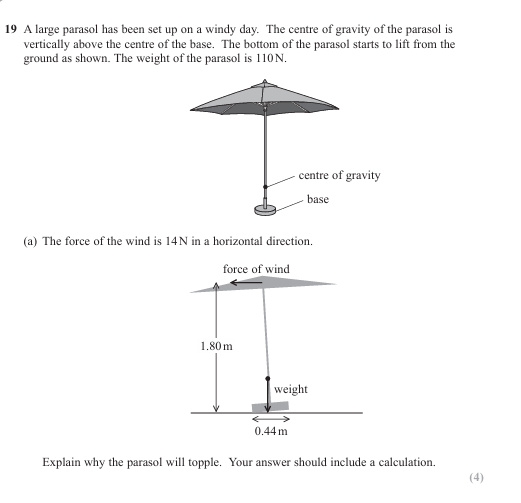
(October 2021)
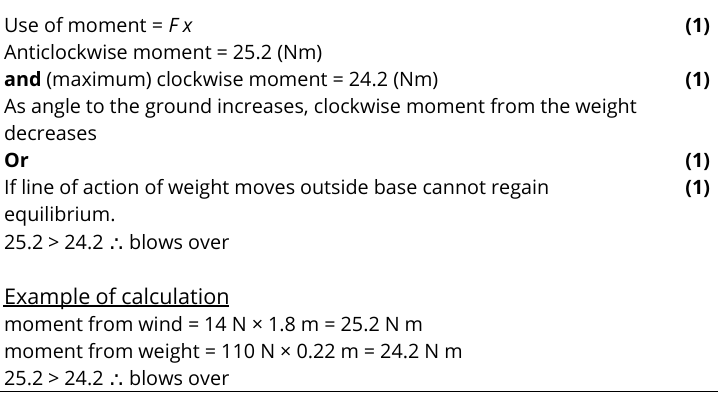
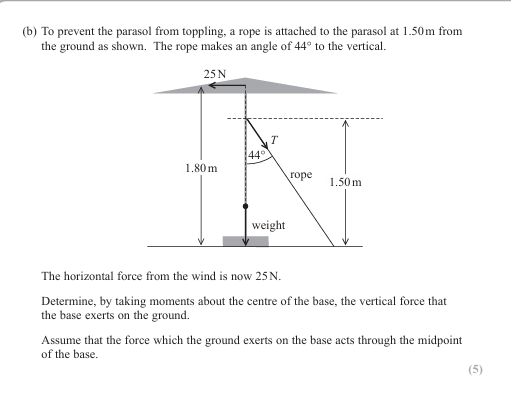
(October 2021)

The material has a large value of the Young modulus.
Which of the following statements best describes the material?
A A large force per unit cross-sectional area is required to break the wire.
B The mass per unit volume is large.
C The ratio of tensile stress to tensile strain is large.
D After removing a large stress the sample returns to its original length.
C The ratio of tensile stress to tensile strain is large.
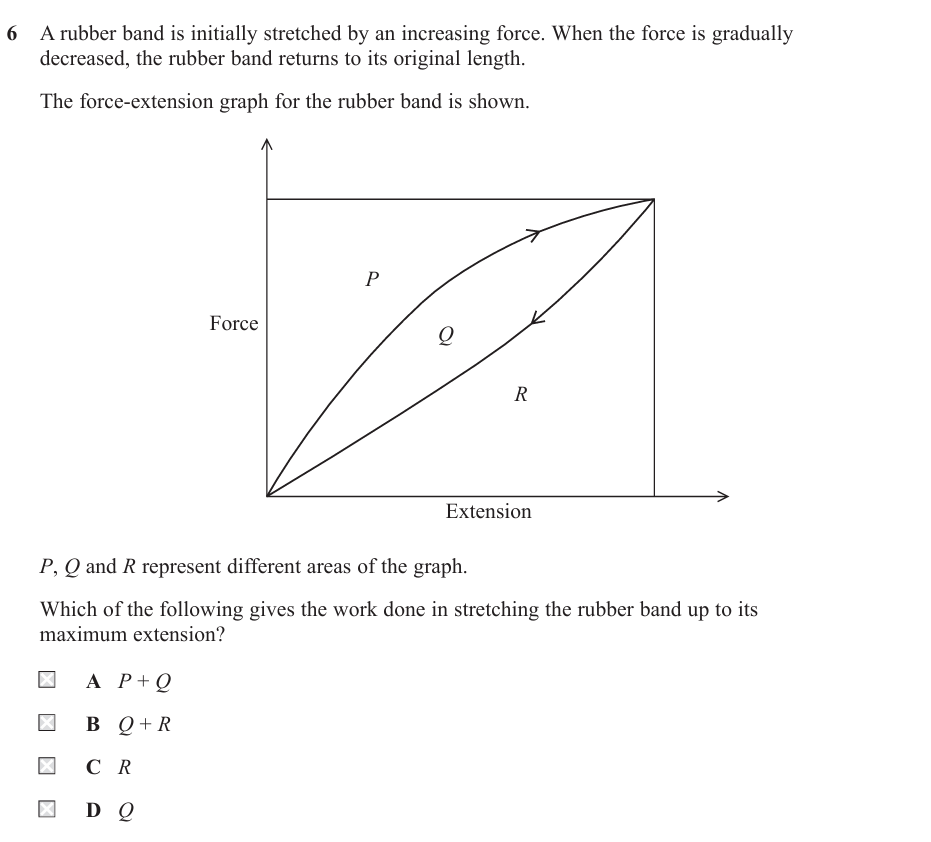
Answer: B) Q + R
